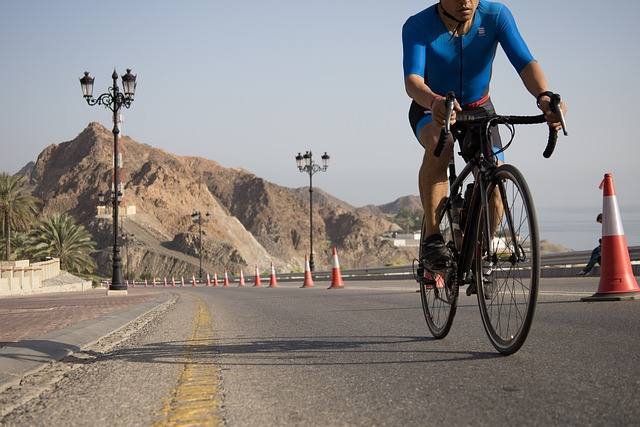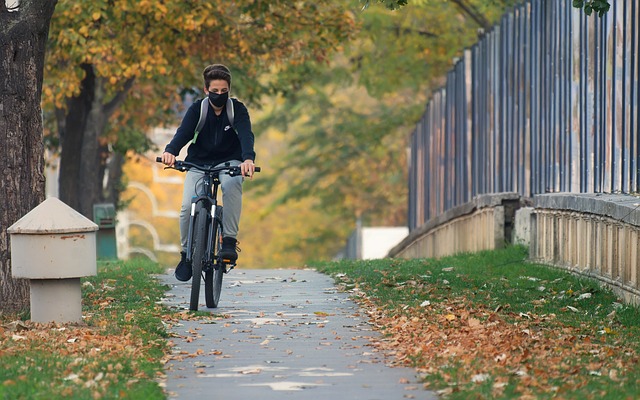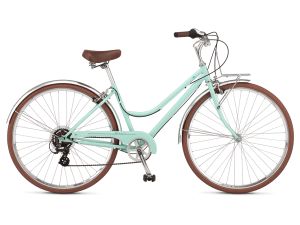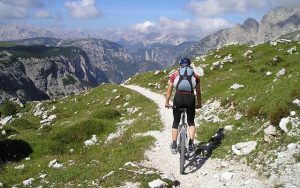Biking for 30 to 60 minutes is a good place to start for the majority of beginners. This could take 2-4 hours for the more seasoned biker. Below will tell you how long and how often should you cycle for weight loss and other information you should keep in mind.
If you go over that, your body will start moving into uncharted territory. Even though it is frequently mentioned online and by numerous coaches, it is crucial to gradually improve your fitness. Your cardiovascular fitness will increase as a result of allowing the body to adjust to the increased stress.
An outstanding cardio exercise is biking. 400 calories per hour will be burned by you. Your legs, hips, and glutes are all strengthened as a result, as well as the rest of your lower body.
Please read on.
Table of Contents
Average Cycling Distance For Beginners – How Far?
Beginners’ average cycling distance varies, primarily due to two factors: speed and distance. It is typical for beginners to initially have difficulty producing high power, so the difference in average speed between them and experts is understandable. The average cycling distance is therefore considerably shorter.
So, knowing all this now, what is the average cycling distance for beginners?
You can accurately gauge how far you should be able to ride by looking at the statistics below, which are based on your current level of fitness.
| Distance in kilometers | Difficulty |
| 0-10km | Very Easy |
| 11km – 20km | Rather Easy |
| 21km – 30km | Challenging |
| 31km – 40km | Very Challenging |
| 41km – 50km | Hard |
| 50km+ | Not For Beginners |
Obviously, the more fitness you have from prior physical activities like running, swimming, or working out in the gym. The further you travel, the more comfortably you can ride. However, your ability to feel comfortable on the bike as well as your level of fitness affect the average distance you can ride. So before embarking on a 50-kilometer ride, make sure you see a qualified bike fitter if you’re new to cycling. Your arms, neck, and back will appreciate it.
Cycling for Weight Loss
The Centers for Disease Control and Prevention recommends aiming to lose one to two pounds per week. Most likely sustainable and healthy for your body, this rate of weight loss is. 3,500 more calories must be expended than taken in for a pound of weight loss. Cycling can burn calories quickly depending on your body weight and exercise intensity. According to Harvard Health Publishing, in one hour of cycling, a 125-pound individual will burn:
- 480 calories cycling at a speed of 12 to 13.9 miles per hour
- 600 calories cycling at a speed of 14 to 15.9 miles per hour
- 720 calories cycling at a speed of 16 to 19 miles per hour
- 990 calories cycling at a speed of 20 miles per hour or more
In the same hour, a 185-pound individual would burn:
- 710 calories cycling at a speed of 12 to 13.9 miles per hour
- 888 calories cycling at a speed of 14 to 15.9 miles per hour
- 1,066 calories cycling at a speed of 16 to 19 miles per hour
- 1,466 calories cycling at a speed of 20 miles per hour or more
It is simple to lose at least one pound per week while cycling with no change in diet, provided you were eating the right number of calories to maintain your weight and weren’t overeating before you started cycling. Cutting calories and maintaining a healthy diet can help people who want to lose weight quickly or who are unable to exercise for five hours or more each week still reach their goals.

Pros of Cycling
Cycling has many advantages besides just helping you lose weight. You can enjoy the outdoors activity of biking while exploring your neighborhood or the nearby trails. Bike to work or school to get a workout and use an eco-friendly mode of transportation.
In adverse weather, or if you do no have safe streets and trails to ride on, you can still get in a cycling workout with a stationary bike in your home. You can usually change the intensity on stationary bikes to mimic hills you might encounter outside.
Bicycling is also a low-impact cardio activity. This indicates that it is gentle on your joints and a great option if you suffer from arthritis or other types of joint pain. In comparison to a high-impact activity like running, it is also less likely to hurt or injure your joints.
What Muscles Does Biking Use?
As you might expect, biking involves a lot of lower body activity. “It will give you an amazing leg workout—mostly the quads, hamstrings, and glutes,” says Former professional cyclist and Strava athlete Lauren De Crescenzo. “You have to use your heart and lungs in addition to the pedals.”
With each pedal stroke, various muscles in your legs are engaged. Beldini breaks it down in detail: “The pedal stroke is broken up into four parts, just like a clock. The first portion of the push power phase, also known as hip extension and activated by the gluteus maximus, begins when the pedal is at its highest point at 12 o’clock. The power phase, which activates knee extension and is strongly carried out by the quadriceps (quads), starts as the pedal approaches the three o’clock position. The gastrocnemius, a large calf muscle, is activated as the ankle starts to plantar flex (point down) as it moves toward the pedal position at 6 o’clock. The start of the upstroke, or pull power phase, occurs as the pedal moves from 6 to 9 o’clock. This is done by dorsiflexing the ankle, which is controlled by the anterior tibialis (shin muscle), engaging the hamstring group to flex the knee, and generating the strongest pull upward past 9 o’clock, which causes the psoas (hip flexor) to engage.”
See more about What Muscles Does When Biking
How to Increase the Difficulty Or Intensity of a Bike Ride?
Bike riding can still be a strenuous workout even though you’re sitting down. You can adjust the difficulty of any bike ride by pulling a number of levers. “This can manifest as resistance, hills, and speed. A variety of all three in intervals is a great option” says McManus.
“The steeper the climb, the more resistance you’ll feel on your pedals,” adds De Crescenzo once scaled Mount Everest because she has such a passion for hills. Everest in one day. But even if you don’t have access to a nearby mountain, “you can add resistance by either shifting into a harder gear on a flat road or by adding resistance to an indoor bike,” she says.
How Long (and How Often) Should You Bike to See Benefits?
How often and for how long you should ride a bike is a personal decision that is based on a variety of factors, including your fitness level and goals. “20 to 30 minutes can be very beneficial if you are using your bike to perform a HIIT workout, which involves short bursts of high intensity exercise separated by rest periods. If you are not working as hard or have different goals like endurance or recovery, then 45-60 minutes may be appropriate,” says McManus.
The secret to getting results from any exercise, including biking, is consistency. Beldini says if you cycled 4-5 times a week and did strength or cross-training on the other days, you would likely see improvements in strength, VO2 max (the highest rate of oxygen consumption attainable during maximal exercise),1 cardio function, balance, coordination, and core stability. However, even good things can be had in excess. An overuse injury can be caused by anything that is repeated frequently. One needs to be fitted properly for a bike, just like they would for the right shoe.
Ride at a pace that feels comfortable to you. “Begin slowly and increase over time. It’s an investment for the long term. By starting with just a few hours a week, you’ll build a base and see huge improvements quickly,” suggests De Crescenzo.
READ ABOUT
Is It Good for Me If I Have a Health Condition?
Because biking is a low-impact exercise, it’s ideal if you have arthritis in your hips, knees, and ankles or you’re recovering from a joint injury. In addition, it aids in the development of stronger leg muscles that offer your joints more support and lessen pain.
Bike riding is fine if you have back issues, but you should find another form of exercise that will build your core and increase your flexibility.
Looking to drop some pounds to help manage diabetes, high blood pressure, high cholesterol, or even heart disease? Biking is a great addition to your cardio routine that will also make your heart stronger.
Concentrate on indoor cycling while you are expecting. A stationary bike gives you stability, preventing falls. If you were an intense cyclist before getting pregnant, you should be able to continue that during your pregnancy. To be certain, confirm with your doctor.



